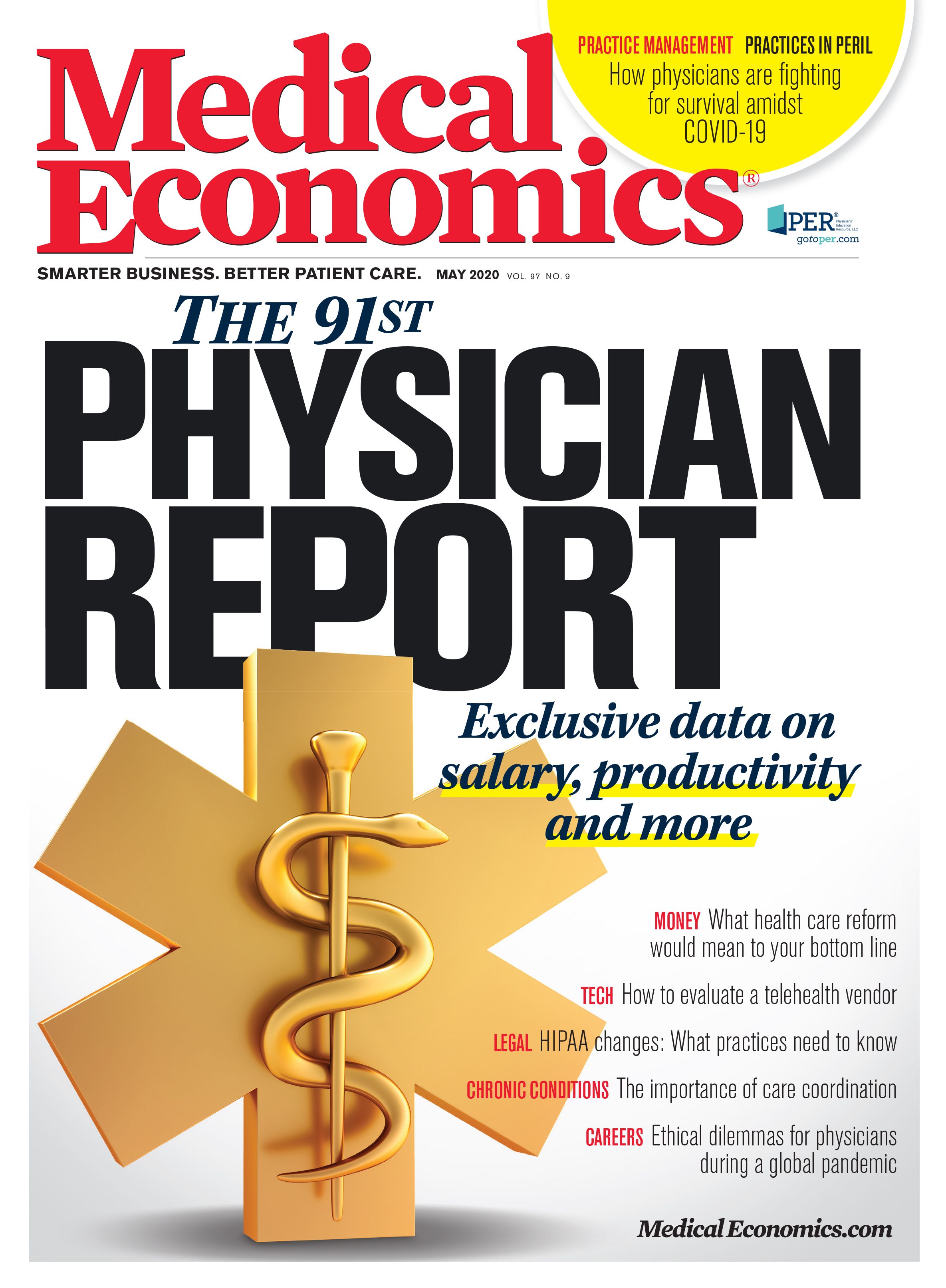Publication
Article
Medical Economics Journal
How medical practices are faring in 2020
Author(s):

A majority of physicians have seen their practice’s financial state improve or stay the same in 2019, according to the results of the 91st Annual Medical Economics® Physician Report.
In all, 23% of respondents say their practice did better financially in 2019 compared with a year prior. A further 55% say their practice is doing about the same as the year before. These figures saw a modest rise from 2018. Only 22% of respondents say their practice is doing worse than the prior year. The respondents chalk their improved performance to seeing more patients (52%), pay-for-performance incentives (29%) and changes in their practice models (26%).
Those who say their practices are worse off than a year ago cite as reasons more time spent on uncompensated tasks (67%), lower reimbursements from commercial payers (66%) and higher overhead (60%).
Compared with five years ago, 34% of respondents say they are doing better financially, and 38% say they are doing about the same.
This year’s survey garnered 1,055 responses across 17 specialties. A majority of respondents (29%) practice family medicine, with internal medicine (20%) coming in a close second.
The survey was conducted by HRA®(Healthcare Research & Analytics) via email in February 2020, before the COVID-19 pandemic began to affect the financial state of practices. Below are other highlights from this year’s report.
Salary
The estimated 2019 total income for the typical physician respondent was $273,000. For those with an ownership stake in the practice, that number jumped to $289,000, while those without an ownership stake averaged about $258,000.
Within these figures, the gender pay gap is still prevalent, with male physicians making an average of $300,000 and female physicians earning an average of $226,000. Although these sums are about $6,000 lower than in 2018, the disparity remains the same at $74,000.
Incomes also vary depending on specialty. The top specialty is cardiology, with an average income of $381,000, followed by urology, with an average income of $358,000. Internal medicine physicians bring in an average of $243,000, and family medicine practitioners earn $241,000 on average.
Physicians’ pay also seems to be tied to geographic region. Physicians in the Midwest are the only ones who saw an increase in income ($2,000) between 2018 and 2019, while the Northeastern, Southern and Western parts of the country saw decreases in income.
Of the respondents, 63% say they see a minimum of 51 patients in their office in a typical workweek, while 18% see a minimum of 26 patients in the hospital.
Challenges
The biggest challenges facing primary care practices are the continued burden of paperwork and quality metrics (74%), third-party interference (62%) and inadequate reimbursements (61%).
Respondents also cite as a challenge the average medical school debt of $161,000, and 35% cite the need for the United States to adopt a public option to supplement the Affordable Care Act.
The state of the medical profession seems strong, with 55% of respondents saying that if they could go back in time, they would choose the same medical specialty and 25% saying they would go into a different specialty. Only 15% say they would choose a different profession altogether. Additionally, 42% of responding physicians say they would recommend the medical field to their children or a friend’s child, while 32% say they would advise against that career choice.
Malpractice rates
For malpractice insurance, the 2019 average cost was $17,900, while 31% of respondents say they don’t know what their premiums are.
Regarding changes, 59% say their premiums stayed the same from 2018 to 2019. A further 23% say it increased, while only 5% saw a decrease in premiums. Thirteen percent of respondents say they don’t know whether there was a difference in premiums between the two years.
The median annual malpractice premium for respondents who describe themselves as practicing family medicine is $8,100; for internal medicine, $8,500; and for cardiology, $18,000. Male physicians saw a higher median annual malpractice premium, at $10,300, than female physicians, who saw a median premium of $9,300.
To help boost their business, a vast majority (82%) of physician respondents say their practice offers a minimum of one ancillary service. The top ancillary services provided by physician practices are electrocardiogram (52%), lab services (48%), spirometry (28%), radiology or imaging services (25%) and nutritional or weight loss counseling (24%).
About half of the respondents estimate that between 1% and 10% of their 2019 revenue was generated by these ancillary services.
Prior authorizations
For prior authorizations, a perennial annoyance, physicians spend an average of 11 hours a week, while office staff spend 14 hours a week on average on them. Thirty-five percent of respondents cite this time spent as the biggest frustration with prior authorizations. Coming in a close second (34%) is the feeling that insurers were telling physicians how to do their jobs.
Staffing
The average physician respondent says they employee 4.4 medical assistants, 3.4 front desk workers, 2.9 registered nurses, 2.7 nurse practitioners or physician aides, 2.5 billers or coders, 2.5 schedulers, 2.3 office managers or administrators of social services or care coordinators, 1.6 information technology (IT) staff members and one pharmacist.
The majority of respondent practices (63%) currently have no IT staff, but that is likely to change in the near future as practices and the Centers for Medicare & Medicaid Services are forced to move toward telehealth solutions because of the ongoing COVID-19 pandemic.






